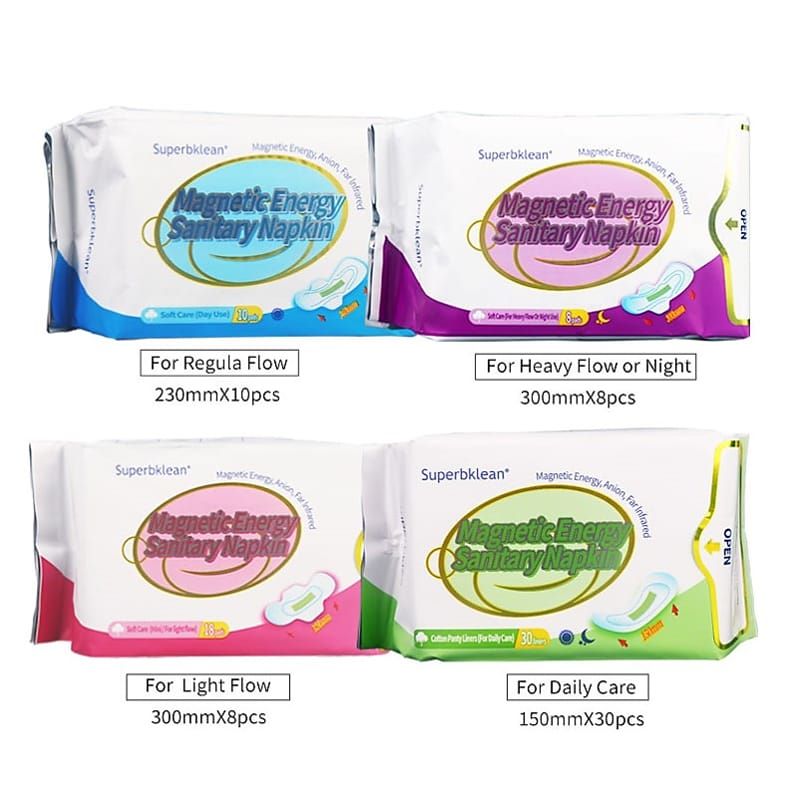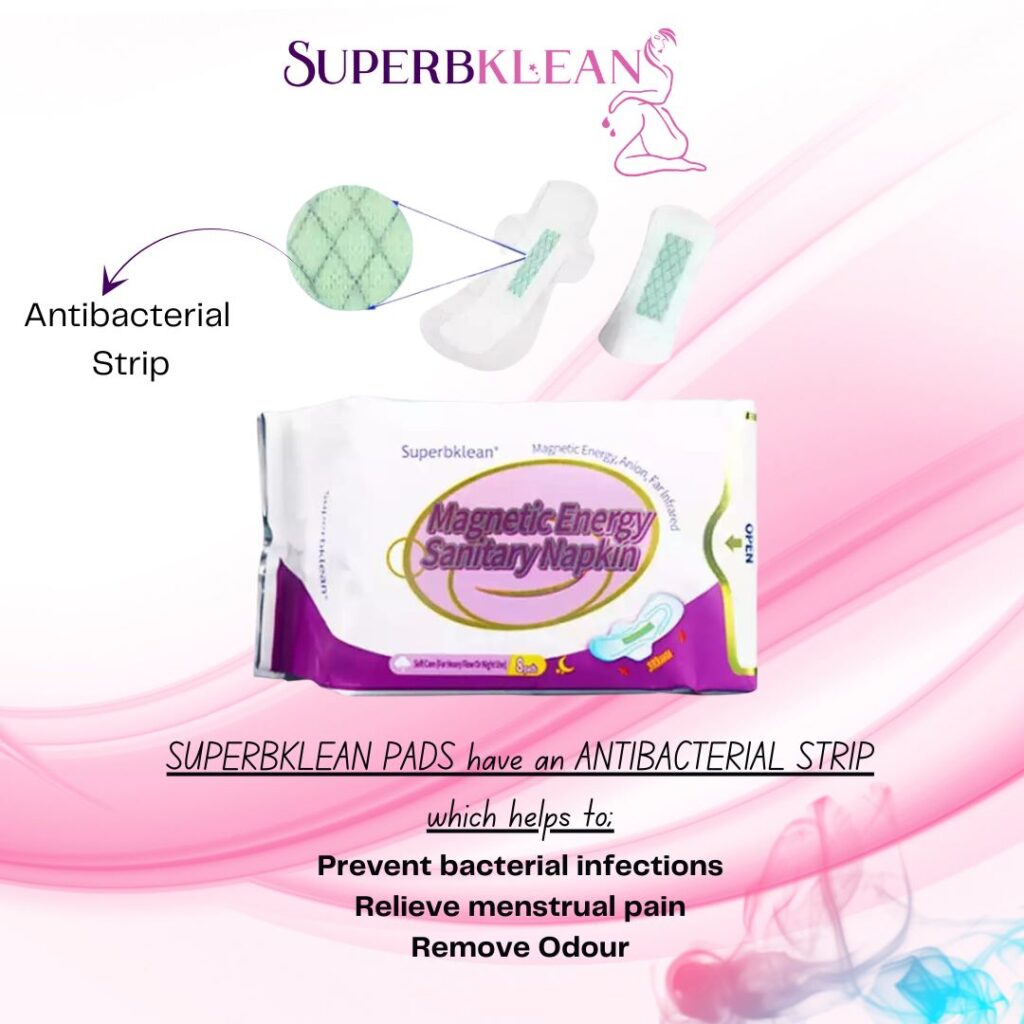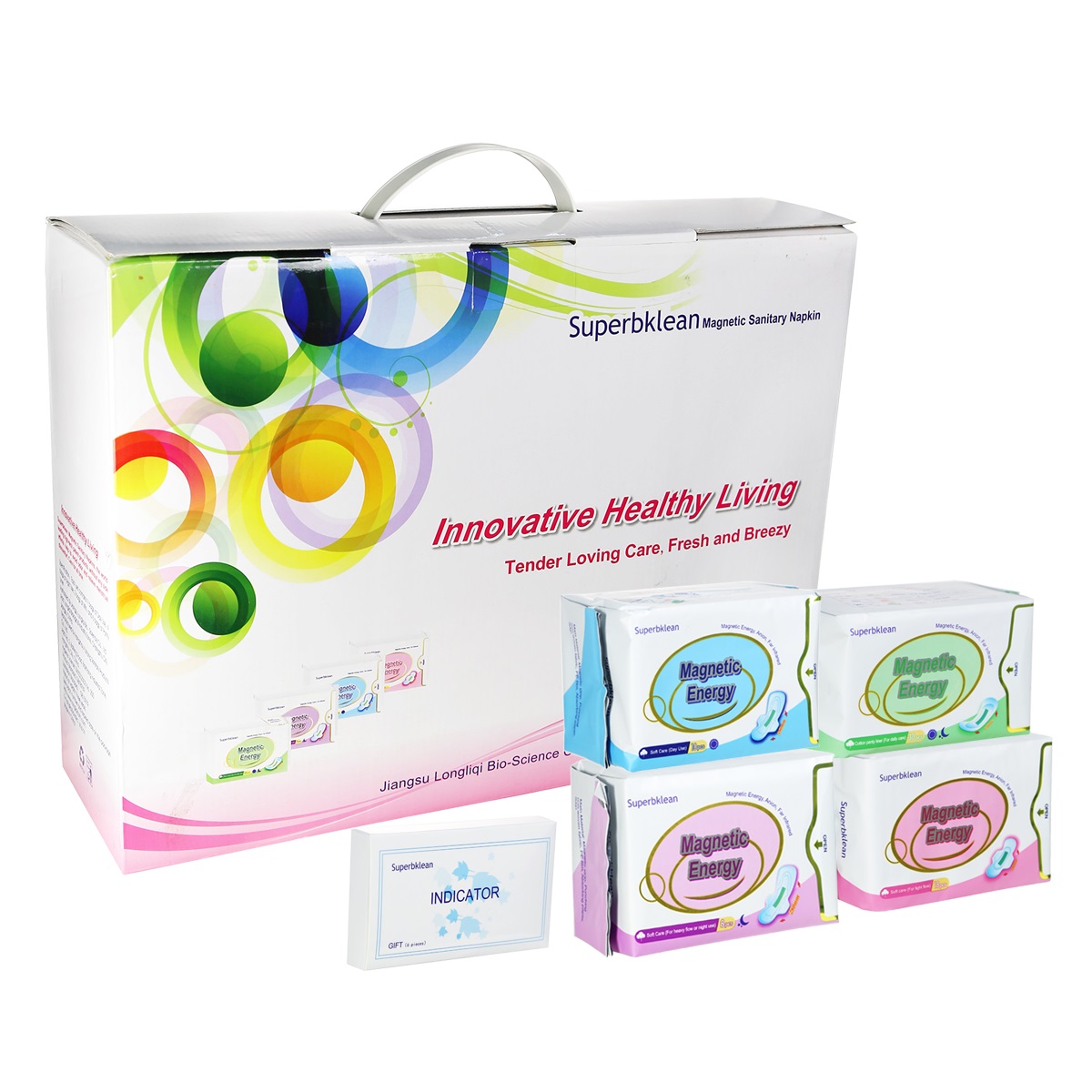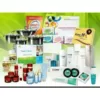What is a sanitary napkin?
A sanitary napkin, also known as a sanitary pad, menstrual pad, or simply a pad, is an absorbent item worn by women and girls during menstruation to collect menstrual blood. These disposable pads are typically made of multiple layers of absorbent material, including cellulose fiber, superabsorbent polymer, and a waterproof backing. They come in various sizes and thicknesses to accommodate different levels of menstrual flow.
What is the difference between sanitary napkins and pads?
The terms “sanitary napkin” and “pad” are often used interchangeably to refer to the same product. However, there is a subtle distinction. A sanitary napkin is the broader term, encompassing any absorbent item worn during menstruation, while a pad specifically refers to a disposable sanitary napkin.
What is the use of sanitary napkins?
Sanitary napkins primarily serve the following purposes:
- Absorb menstrual blood: Sanitary napkins prevent menstrual blood from leaking onto clothes and causing discomfort or embarrassment.
- Maintain hygiene: Sanitary napkins help keep the vulva clean and dry, reducing the risk of bacterial infections.
- Enhance comfort: Sanitary napkins provide a comfortable and secure way to manage menstrual flow, allowing women to engage in their daily activities without disruptions.
Which sanitary pad is best for menstruation?
The best sanitary pad for menstruation depends on various factors, including:
- Menstrual flow: Lighter flows may require thinner pads, while heavier flows may necessitate thicker pads or even multiple pads.
- Skin sensitivity: For those with sensitive skin, pads with soft, hypoallergenic materials are recommended.
- Personal preference: Some women prefer pads with wings for added security, while others prefer wingless pads for a more discreet fit.
Longrich Sanitary Pads: A Promising Choice
Longrich sanitary pads are gaining popularity due to their unique features and potential benefits:
Anion technology: Longrich pads incorporate anion technology, which is believed to promote blood circulation, reduce odor, and alleviate menstrual discomfort.
Far-infrared technology: The far-infrared technology in Longrich pads is claimed to enhance blood flow and promote overall well-being.
Breathable material: Longrich pads are designed with breathable materials to prevent skin irritation and promote comfort.


Sanitary Napkin Benefits
Sanitary napkins offer several advantages over other menstrual management methods:
- Convenience: Sanitary napkins are easy to use, change, and dispose of.
- Discreetness: Sanitary napkins are designed to be discreet and comfortable under clothing.
- Protection: Sanitary napkins provide effective protection against leaks and stains.
- Accessibility: Sanitary napkins are widely available and relatively inexpensive.
Napkin Prices
Sanitary napkin prices can vary depending on the brand, size, quantity, and features. Generally, pads for lighter flows may be less expensive than those for heavier flows.
Uses of Sanitary Napkin
Sanitary napkins are primarily used during menstruation, but they can also be beneficial in other situations, such as:
- Postpartum bleeding: Sanitary napkins can help manage bleeding after childbirth.
- Surgery recovery: Sanitary napkins can be used after gynecological surgery to absorb bleeding.
- Miscarriage or abortion: Sanitary napkins can provide comfort and support during these sensitive times.
Sanitary Napkin vs Pad
As mentioned earlier, “sanitary napkin” and “pad” are often used interchangeably. They refer to the same disposable absorbent item worn during menstruation.
Sanitary Pads Disadvantages
Despite their advantages, sanitary pads have some drawbacks:
- Environmental impact: Disposable pads contribute to landfill waste.
- Potential for irritation: Some individuals may experience skin irritation due to the materials used in pads.
- Cost: Long-term use of disposable pads can be expensive.
Sanitary Pads with Wings
Sanitary pads with wings have additional flaps that extend along the sides of the pad to provide extra protection against leaks. They are particularly beneficial for those with heavier flows or who engage in physical activity during menstruation.
Types of Sanitary Pads
Sanitary pads come in various types to suit different needs:
- Ultra-thin pads: For light flows or everyday wear.
- Regular pads: For moderate flows.
- Maxi pads: For heavy flows or overnight use.
- Pantiliners: Thin, absorbent liners for light spotting or everyday dryness.
Sanitary Pads Advantages and Disadvantages
Table summarizing the advantages and disadvantages of sanitary pads:
| Advantages | Disadvantages |
|---|---|
| Convenience, discreetness, protection | Environmental impact, potential for irritation, cost |
Sanitary Pads: A Sustainable Alternative
In recent years, there has been a growing movement towards sustainable menstrual products, recognizing the environmental impact of disposable sanitary pads. Several eco-friendly alternatives are gaining traction, offering a more sustainable approach to menstrual management:
- Reusable cloth pads: Washable and reusable cloth pads are a sustainable and cost-effective option. They come in various sizes, absorbencies, and styles to suit individual needs.
- Menstrual cups: Reusable menstrual cups are inserted into the vagina to collect menstrual blood. They are emptied and cleaned regularly and can be used for up to 12 hours.
- Period panties: Period panties are leak-proof underwear with absorbent layers to manage menstrual flow. They are comfortable, discreet, and reusable.
Choosing the Right Sanitary Pad
Selecting the appropriate sanitary pad depends on individual preferences, menstrual flow, and activities. Here are some factors to consider:
- Absorbency: Choose pads with the appropriate absorbency level for your flow. Lighter flows may require thinner pads, while heavier flows may necessitate thicker pads.
- Material: Opt for pads made from soft, breathable materials to minimize skin irritation.
- Size: Select pads that fit comfortably and securely without causing chafing or discomfort.
- Features: Consider additional features like wings for extra protection or fragrance-free options for sensitive skin.
Tips for Using Sanitary Pads
- Change pads regularly: Replace pads every 4-6 hours, or more frequently if needed, to maintain hygiene and prevent leaks.
- Wipe clean: Gently wipe the vulva with a soft, damp cloth before applying a new pad to maintain cleanliness.
- Store properly: Keep pads in a clean, dry place to prevent contamination.
- Disposal: Dispose of used pads in designated waste bins.
Sanitary Pads: A Crucial Menstrual Management Tool
Sanitary pads have revolutionized menstrual management, providing women with a convenient, discreet, and effective way to deal with menstruation. While disposable pads have environmental drawbacks, the emergence of sustainable alternatives offers a more eco-friendly approach. By understanding the advantages, disadvantages, and available options, women can make informed decisions about their menstrual care.




Leave a reply